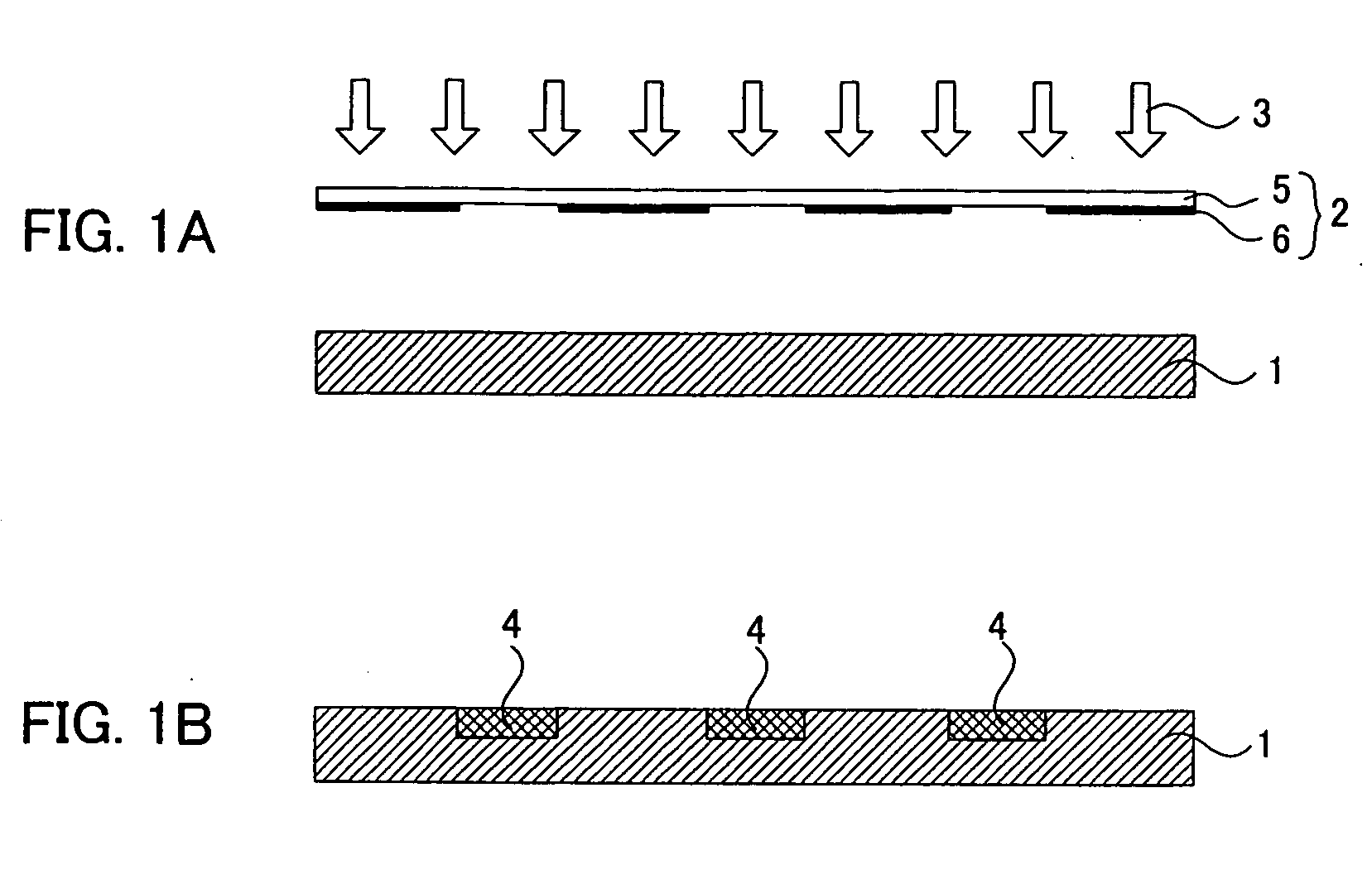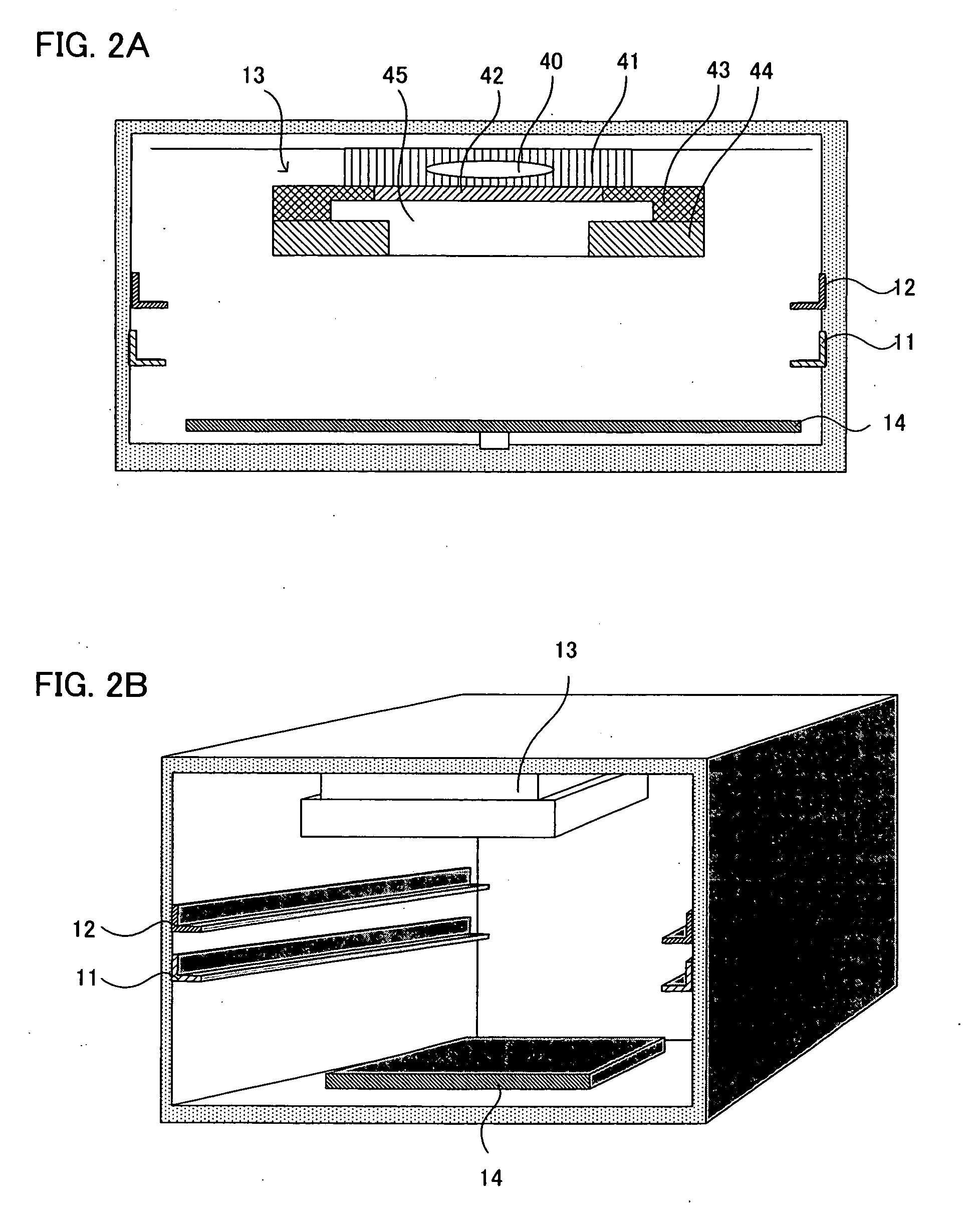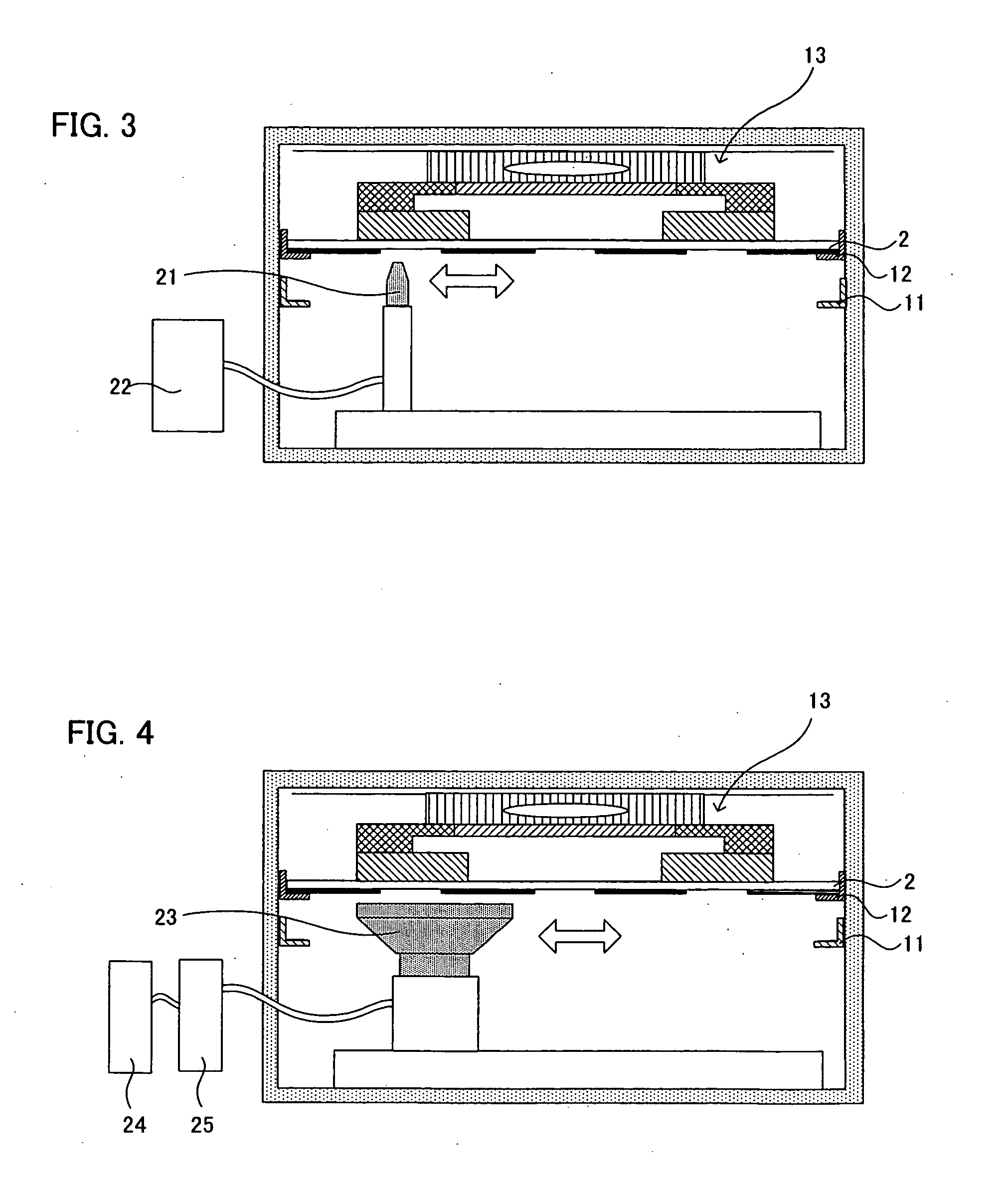Manufacturing method of pattern formed body and pattern formed body manufacturing apparatus
a manufacturing method and pattern technology, applied in the direction of printing machines, cleaning using liquids, instruments, etc., can solve the problems of low location accuracy, material deterioration, and difficult use of methods, and achieve high pattern form accuracy, good wettability, and large contact angle
- Summary
- Abstract
- Description
- Claims
- Application Information
AI Technical Summary
Benefits of technology
Problems solved by technology
Method used
Image
Examples
example 1
[0155] At room temperature, 1.5 g of a fluoroalkylsilane (TSL 8233, manufactured by GE Toshiba Silicone Co., Ltd.), 5.0 g of a tetramethoxysilane (TSL 8114, manufactured by GE Toshiba Silicone Co., Ltd.), and 3 g of 0.1 N hydrochloric acid were stirred for 24 hours to produce a liquid repellent agent containing fluorine. To 1 g of this liquid repellent agent was added 99 g of isopropanol, and then the solution was stirred at room temperature for 10 minutes. This diluted solution was coated onto a glass substrate with a spin coater (at 700 rpm for 5 seconds) to yield a pattern forming substrate on which a wettability variable layer having liquid repellency was formed.
[0156] The pattern forming substrate and a photomask having a pattern with alternately-arranged lines and spaces each having a line width of 20 μm were opposed to each other so as to have an interval of 1 μm therebetween, and an excimer lamp was used to radiate vacuum-ultraviolet light through the photomask onto the pat...
example 2
[0159] In the same way as in Example 1, a pattern forming substrate in which a wettability variable layer having liquid repellency was formed was produced.
[0160] The pattern forming substrate and a photomask having a pattern with alternately-arranged lines and spaces each having a line width of 50 μm were opposed to each other so as to have an interval of 10 μm therebetween, and an excimer lamp was used to radiate vacuum-ultraviolet light through the photomask onto the pattern forming substrate for 40 seconds. As a result, a line pattern, as a lyophilic area, in which its line widths were each 50 μm was formed.
[0161] Subsequently, the following was performed as a foreign matter removing step: the surface side of the exposed photomask which was opposed to the pattern forming substrate was sucked under a pressure of 100 mmHg for 3 minutes. Thereafter, in a subsequent pattern-forming step, vacuum-ultraviolet light was radiated through the photomask, which underwent the above-mentione...
example 3
[0163] In the same way as in Example 1, a pattern forming substrate in which a wettability variable layer having liquid repellency was formed was produced.
[0164] The pattern forming substrate and a photomask having a pattern with alternately-arranged lines and spaces each having a line width of 15 μm were opposed to each other so as to have an interval of 2 μm therebetween, and an excimer lamp was used to radiate vacuum-ultraviolet light through the photomask onto the pattern forming substrate for 90 seconds. As a result, a line pattern, as a lyophilic area, in which its line widths were each 15 μm was formed.
[0165] Subsequently, the following was performed as a foreign matter removing step: wind having a wind speed of 8.5 m / second (measured with a vane type anemometer in a measurement range of 4 inches) was blown, for 4 minutes, onto the surface side of the exposed photomask which was opposed to the pattern forming substrate. Thereafter, in a subsequent pattern-forming step, vacu...
PUM
 Login to View More
Login to View More Abstract
Description
Claims
Application Information
 Login to View More
Login to View More - R&D
- Intellectual Property
- Life Sciences
- Materials
- Tech Scout
- Unparalleled Data Quality
- Higher Quality Content
- 60% Fewer Hallucinations
Browse by: Latest US Patents, China's latest patents, Technical Efficacy Thesaurus, Application Domain, Technology Topic, Popular Technical Reports.
© 2025 PatSnap. All rights reserved.Legal|Privacy policy|Modern Slavery Act Transparency Statement|Sitemap|About US| Contact US: help@patsnap.com



